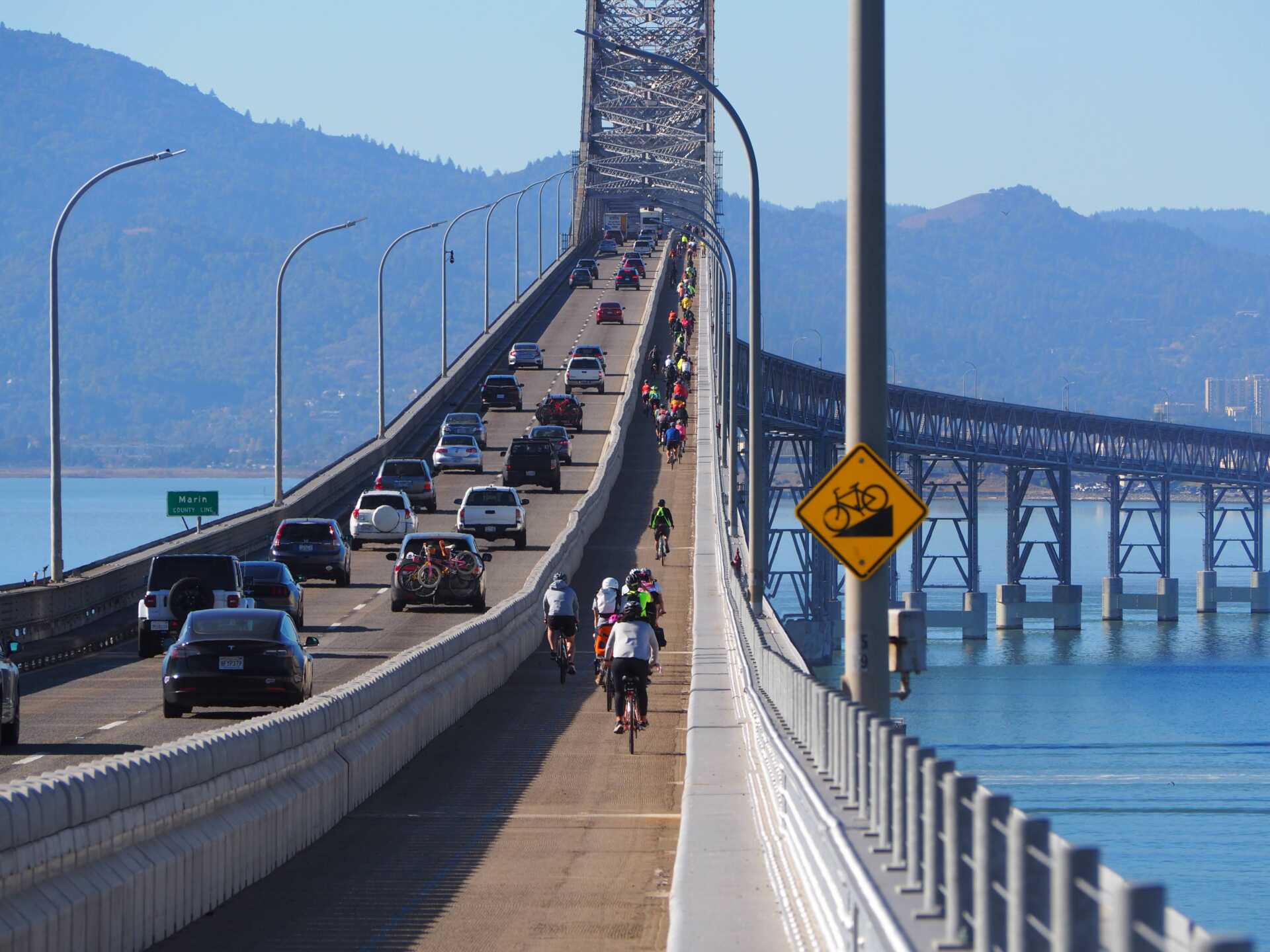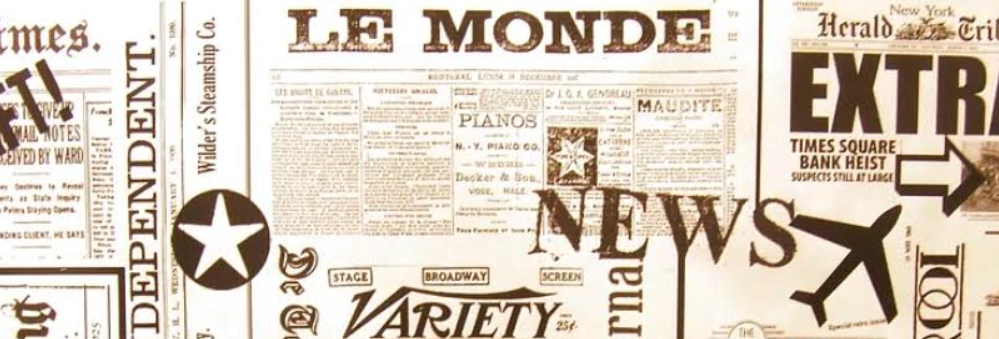As most Streetsblog readers are aware, for some time now the board of the Metropolitan Transportation Commission has been angling to close the bike path on the Richmond-San Rafael Bridge to make room for yet another car lane. Key meetings to hear public comment and receive information on whether or not this made sense were scheduled and then cancelled at the last minute without explanation. Bike East Bay found out why. The following are their findings (a version of this post also appears on the Bike East Bay site):
In March and April, a vote on the Richmond-San Rafael Bridge Trail was scheduled twice then cancelled each time on short notice. Thanks to a public records request we now know what happened.
A few months ago we raised alarm bells about an impending vote by the Bay Conversation and Development Commission (BCDC) to determine whether the Richmond-San Rafael Bridge Trail would stay open 24/7 or be converted into a breakdown shoulder for cars every Monday through Thursday.
The Metropolitan Transportation Commission (MTC), with encouragement from the industry group Bay Area Council, was trying to make a case that they needed to study the impact of having a breakdown shoulder available, despite this condition already existing for more than 40 years prior to the trail opening in 2019. We countered their flawed proposal with an op-ed in the East Bay Times.
The hearing and vote was originally scheduled for March 20th, 2025, then rescheduled for April 3rd, 2025. But then this rescheduled date was postponed again with short notice and little explanation.
Thousands of people signed our petition and coalition letter, wrote comments to BCDC, and many took time off work to participate in-person at the meetings.
While we celebrated the temporary reprieve for the bridge trail, we were also very frustrated by the many starts and stops in the process. So far neither MTC nor Caltrans have offered a public apology
Why the BCDC Vote is Important
Any Richmond-San Rafael Bridge proposal has to receive approval from the BCDC, a public agency established in the 1960s to protect the shoreline and ensure “maximum feasible access” to the Bay.
The MTC and Caltrans submitted a permit amendment request to BCDC for the bridge trail closure, which the 27 individual BCDC members were to vote on with input from a BCDC staff recommendation.
BCDC members are not required to follow the staff recommendation, but it does hold significant influence in the decision making process.
Despite the meeting postponements we knew that a draft staff recommendation had been developed but not yet published. So we submitted a public records request on March 14th for internal communications, to find out what was going on behind the scenes.
This is What We learned
In short, BCDC staff were going to recommend keeping the Richmond-San Rafael Bridge Trail open 24/7, while indicating that the MTC and Caltrans closure proposal did not meet the "maximum feasible public access" standard.
When MTC was unable to negotiate a change to this recommendation in time for the BCDC vote, they elected to cancel the agenda item as opposed to allowing the process to proceed.
The staff recommendation document is very dense, but is available to review in full here.
For full disclosure, this recommendation document was a working draft shared on March 11th, 2025. But based on email communications we also received between BCDC and MTC staff, we are confident that the draft accurately represents what BCDC staff intended to present to their commission members ahead of the scheduled votes in March and April.
Here are some relevant quotes from the draft BCDC staff recommendation:
The Commission finds that reducing the availability of public access for the modified pilot, as proposed, is not warranted at this time on the basis that it does not constitute maximum feasible public access, and the permittee has not sufficiently justified based on the information and evidence in the record before the Commission that maximum feasible public access (continuance of the path) is clearly inconsistent with the project due to public safety or significant use conflicts.
And:
In reviewing the amendment request, the Commission has determined that the reduction of public access proposed is not warranted … Specifically, the proposal raises several questions, including:
- Whether changing so many variables at this stage will negatively impact the quality of the analysis for the overall evaluation of both the original pilot and the pilot extension
- Whether other alternatives to the proposal preserve public access availability
- Whether the modifications would result in better data than what could be collected under the current pilot configuration, and
- Whether sufficient analysis has been conducted in designing the proposed modifications to effectively target the issues of concern."
And:
Caltrans and [Bay Area Toll Authority] BATA are in the process of implementing the Richmond-San Rafael Forward (RSR Forward) project, which is designed to address some of the same concerns that have arisen during the pilot, namely congestion on the western bridge approach and potential impacts on local arterials.
RSR Forward is planned to begin implementation in 2026 with replacement of the toll plaza with an Open Road Tolling system and implementation of an HOV lane on the approach.
As these improvements will likely also impact congestion, travel times, and incident rates (the Open Road Tolling project is projected to save travelers about 12 minutes for buses and carpools and about 5 minutes for other traffic), they should be implemented along with the original pilot project [meaning 24/7 trail access] to avoid confusing the impacts of multiple changing variables and to allow for an assessment of how the improvements interact with the maximum feasible version of public access on the bridge.
What's Next?
MTC and Caltrans are still trying to bring the trail closure proposal back to BCDC sometime in Summer 2025. This will happen in August at the earliest, possibly at the BCDC meeting date on the 7th or the 21st.
Everyone who has signed our petition (click here) will get an update as soon as the vote has actually been rescheduled. We have asked MTC staff to not schedule the item this time until they are 100% confident about their proposal.
We have learned that MTC staff are trying to negotiate a deal, providing additional bike/walk facility funding in return for approval of the trail closure. But the standard set in the draft BCDC staff report is very clear, that “maximum feasible public access” means keeping the trail open 24/7.
We need individuals to speak up and help hold decision makers accountable to this standard, especially if the BCDC staff recommendation changes significantly ahead of the next scheduled vote.
Thank you for your ongoing support of our work! Learn about more of our major campaigns at BikeEastBay.org/Campaigns, sign up for mailing lists using the form below, and join as a Bike East Bay member to help keep the gears turning.





